Scotland; 5/14-21/2017
All photos are © Marshall Faintich
Cromarty Firth; May 15
Our group went by coach to Cromarty Firth for a boat ride to look for dolphins and birds. Along the way on the bus, we saw several flocks of Rooks (life bird # 644) in the fields, and then stopped at an old church were I saw Linnets (life bird # 645), but they flew away before I could get any photos of them.
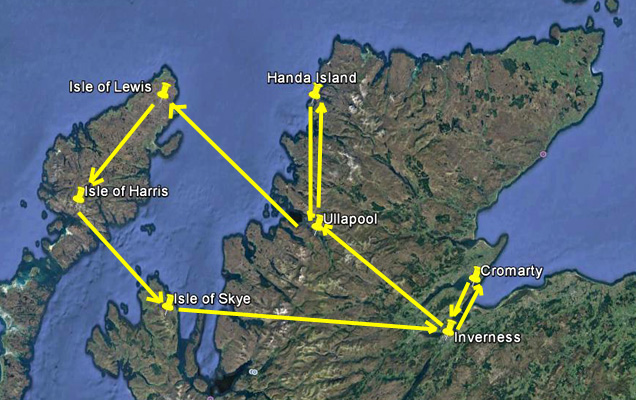
Tour Map
| | |
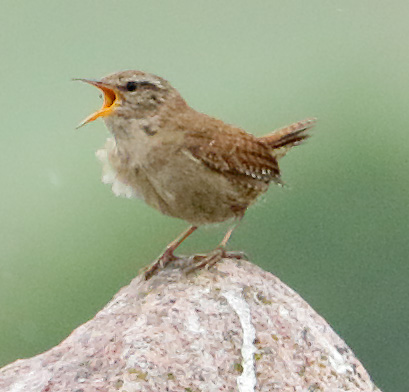
(Eurasian) Wren atop a grave stone
Johathan told us to dress warmly, and to don our rain gear for the boat ride. The firth didn't look at all like the photo of Comarty Firth to the right that I took in the afternoon. That morning, there was light rain, strong wind, and large waves in the firth. I was wearing four clothing layers for warmth plus my raincoat and rain pants over my jeans. The boat company gave us heavy rain pants and a hooded rain jacket to wear over what we were already wearing. I wasn't hot on the boat ride. We went out on a Rigid Inflatable Boat (RIB) that was basically a zodiac with a rigid boat-shaped frame. We sat astride on low oval stools with a metal hand grip on the front of the stool. It was like riding a bucking bronco. Alice and I were on the first two seats, and we got to enjoy the full effect of the rain, wind, sea spray, and boat bouncing. We rode out to the whitewash area seen in the photo where the birds were nesting. The sea was so rough that the dolphins did not appear, but I was able to get a few photos.
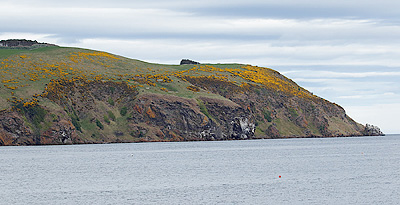
Cromarty Firth
| | |
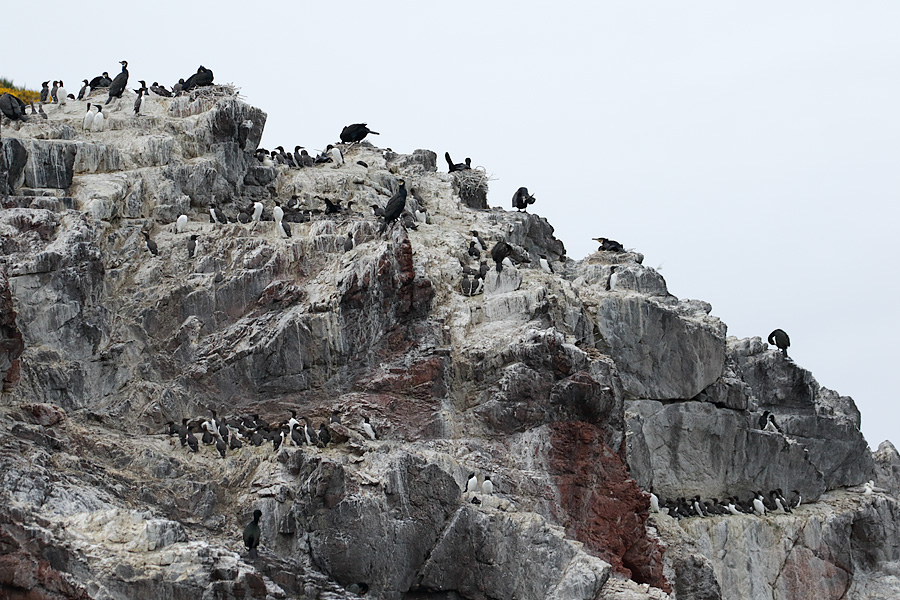
Cromarty Firth birds
We saw Guillemots. I thought I had another life bird, but this is another name for Common Murre, so it was just another trip bird species.
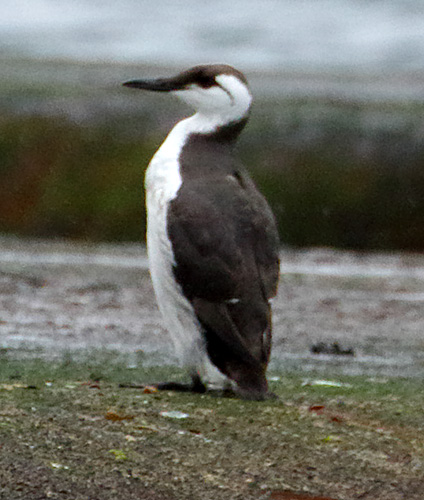
Immature Guillemot (Common Murre)
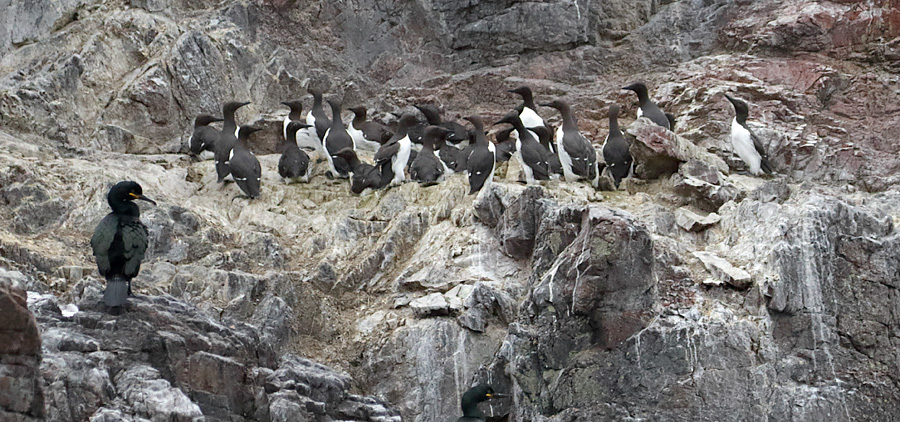
Guillemots (Common Murres) and a Shag
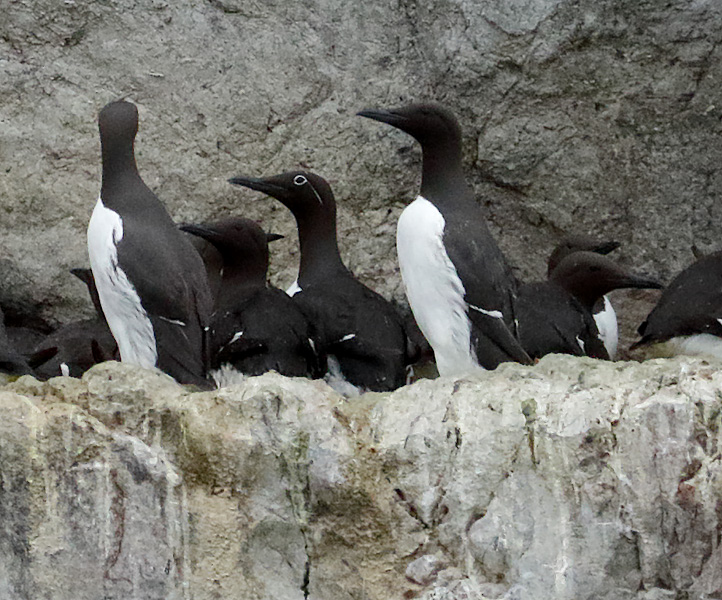
Guillemots (Common Murres) - note the one with white spectacles
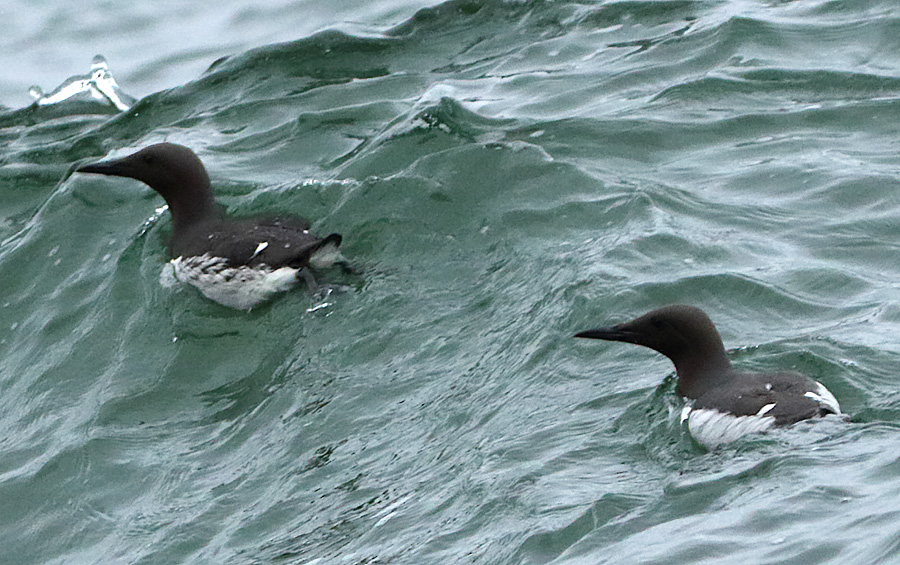
Guillemots (Common Murres)
We saw lot of Razorbills (life bird # 646).

Razorbills
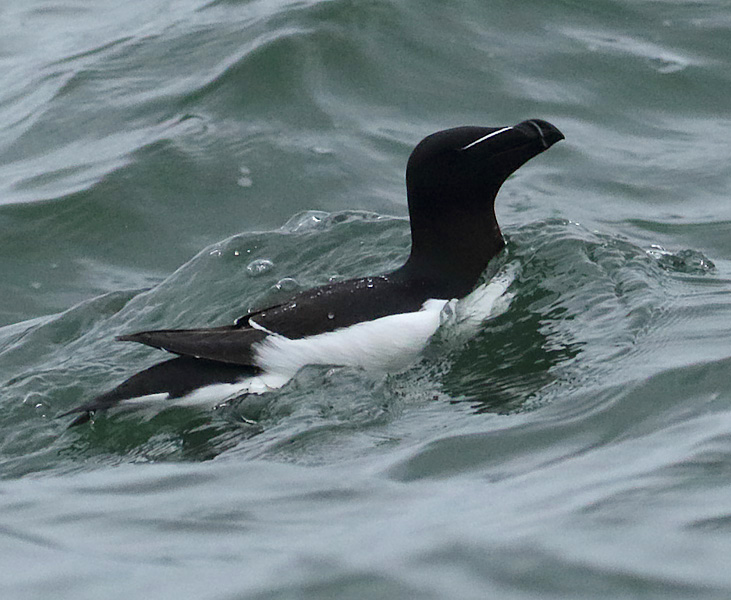
Razorbill
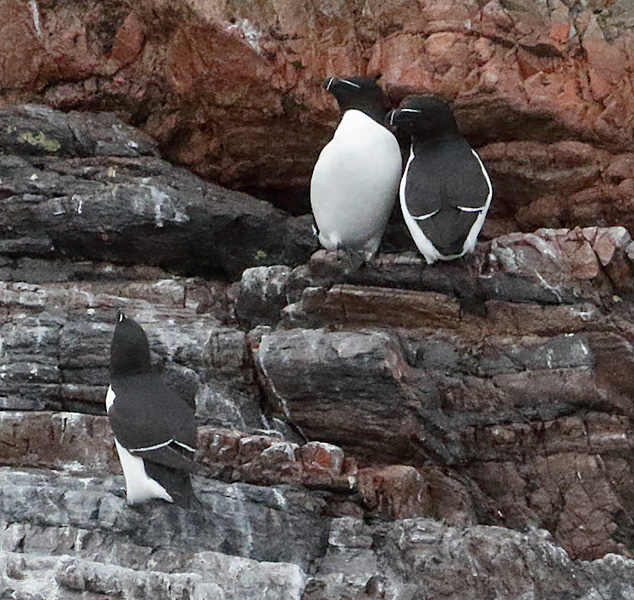
Razorbills
There were (Great) Cormorants and Shags nesting on the rocks. One of the Cormorants didn't seem to appreciate getting its picture taken.
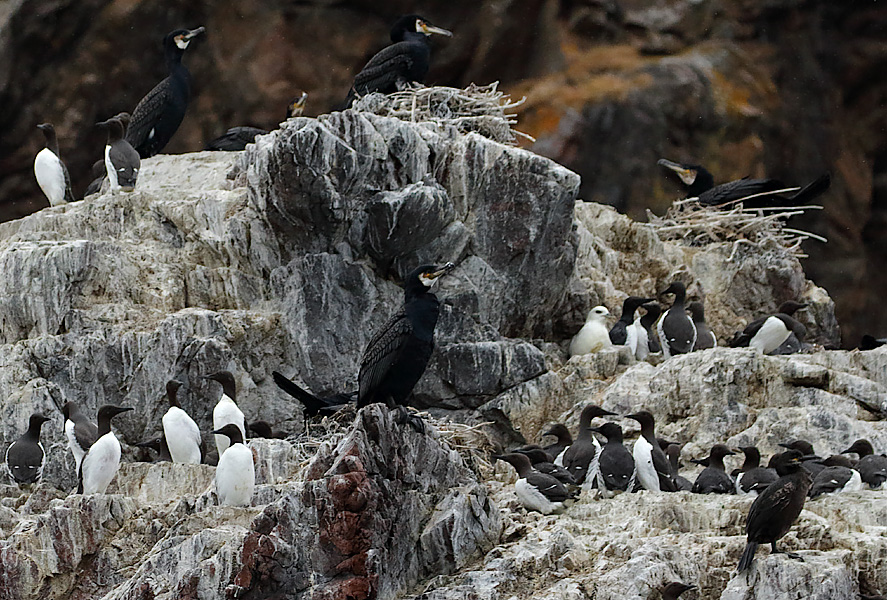
(Great) Cormorants, Guillemots, a Shag, and a Fulmar
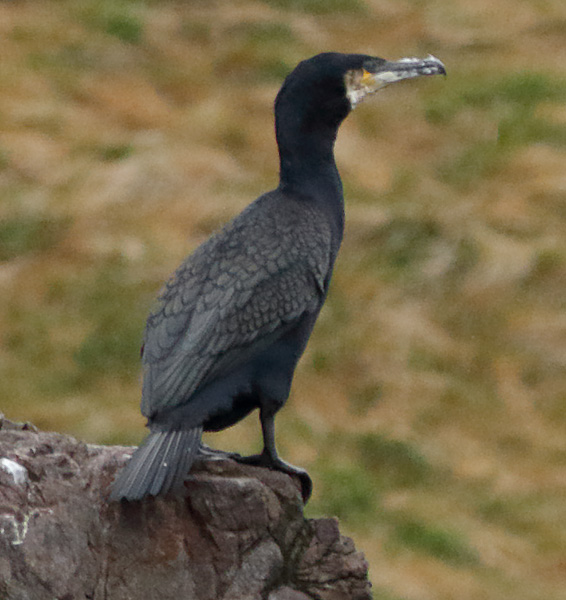
(Great) Cormorant
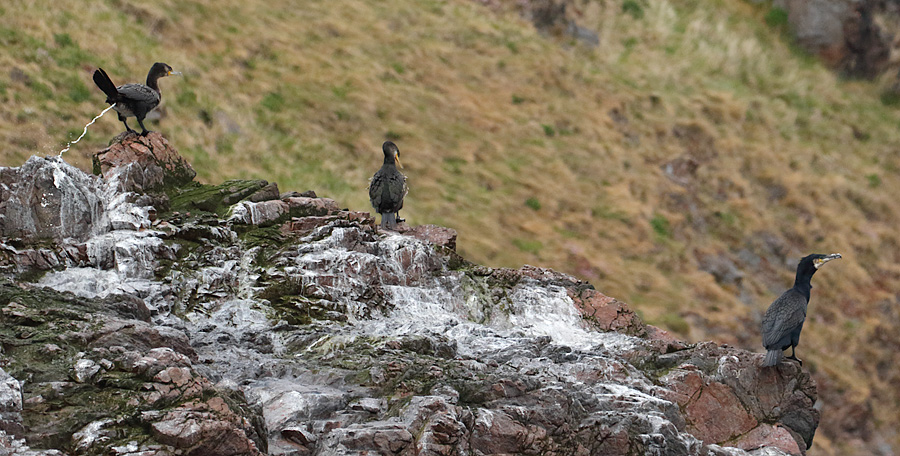
(Great) Cormorants - the one on the left commented on my photography :-)
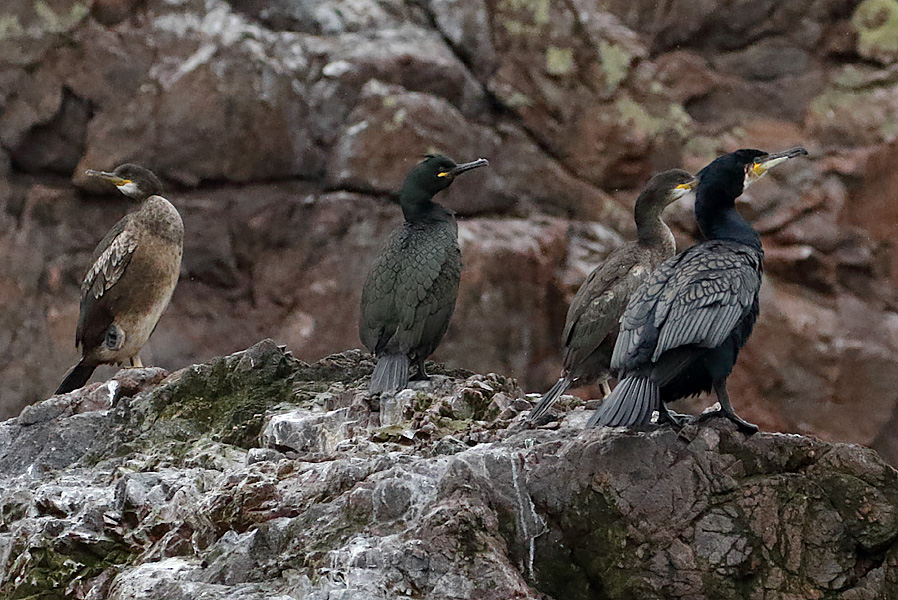
(Great) Cormorants and a Shag
I also saw (Northern) Fulmars and (Black-legged) Kittiwakes (life bird # 647).
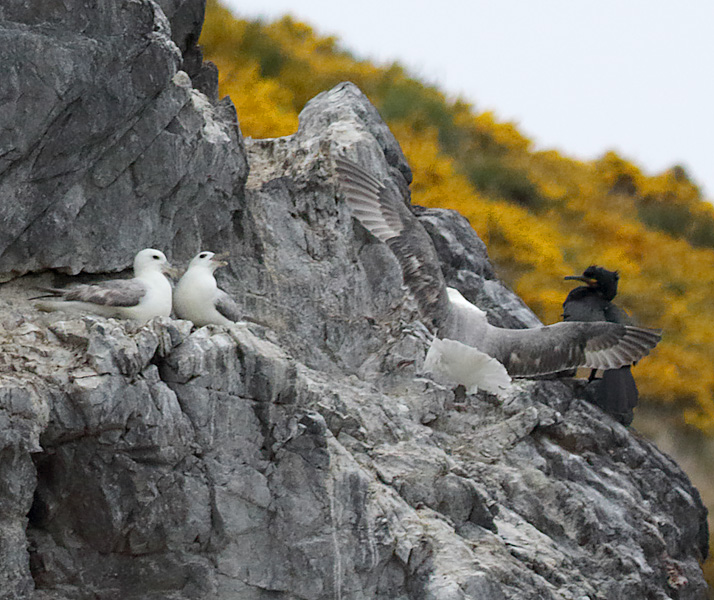
(Northern) Fulmars and a Shag
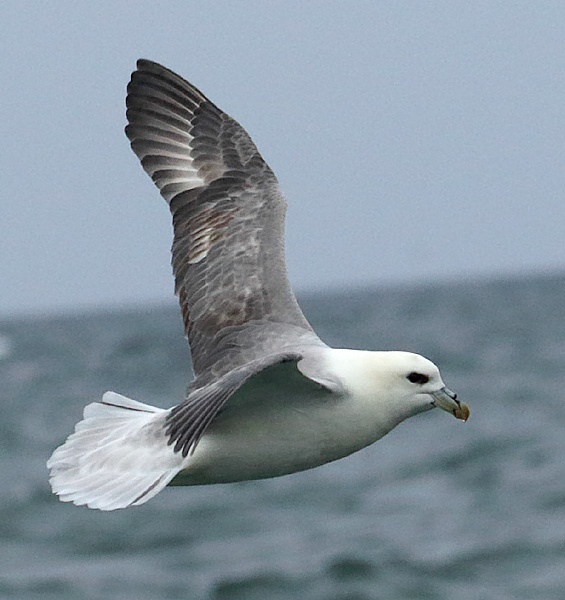
(Northern) Fulmar

(Black-legged) Kittiwakes
Some hot chocolate and then lunch warmed us up, and then we did some afternoon touring of the village and surrounding areas. I spotted some distant birds - a Greenfinch and a (Eurasian) Goldfinch. We stopped at a spring where the custom was to leave a shred of clothing and the myth was that health problems would be healed. I saw a vole there. We also stopped at a beach area to look (unsuccesfully) for dolphins, but I saw more Linnets (again, no photos), and a few other species.
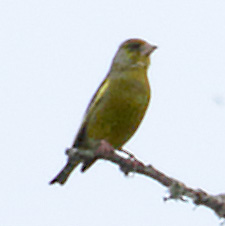
Greenfinch
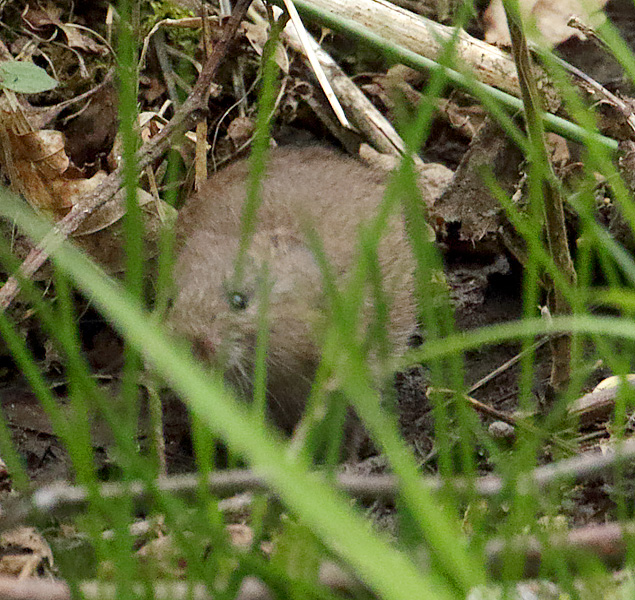
Vole

Pied Wagtail (sub-species of White Wagtail found on the European mainland)

Song Thrush
After dinner, some of us went with Jonathan to the nearby Aigas Field Center and sat quietly in a hide for almost two hours, hoping that badgers and pine martins would appear, but they did not. A bat flew by several times, we saw a large toad, and heard repeated calls of a (Eurasian) Cuckoo. The Cuckoo would be a life bird for me, but my personal criterion for life birds is to have seen or photgraphed the species, and I don't count heard-only birds. Many bird calls are too similar or copied from other species for me to always know for sure what bird I have heard, and as it isn't easy to know where to draw the line on heard birds, I decided for my own list, not to add them as new species to my life list.
Click here to continue on the trip west to the Scottish highlands





















